
I help gardeners grow
& beginners blossom.
No seed left behind,
no soil unturned.
Together we can have lots of fun growing
great gardens using simple practical tips.
- Featured in -





Start saving & storing your garden seeds for a more more sustainable future
SIGN UP to get the FREE Seed packet PDF
X CLOSE
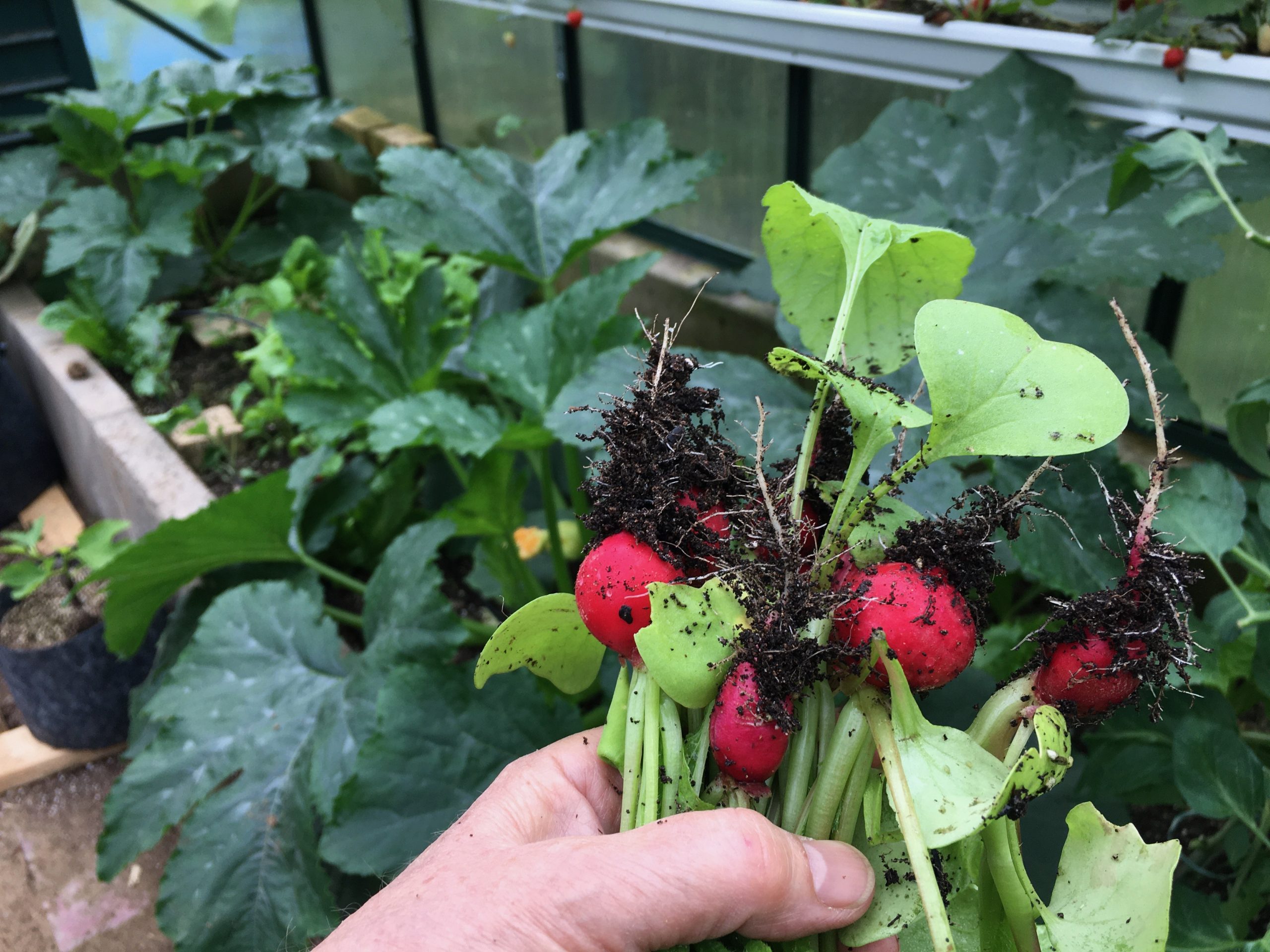
Soil Matrix Biochar & Terra Pretta
Soil Matrix Biochar & Terra Pretta (interview transcript)
“What the biochar does is it welcomes all those beneficial microbes that use the compost as food and convert the compost into plant available nutrients.”
This interview has been edited for space. To hear the entire interview go to my podcast, Helping Gardeners Grow, Season 1, episode 13.
Donna: This is a very unusual topic for us today because usually it’s about something specific, like how to grow saffron or how to grow figs but today it’s how to grow everything. So welcome, Rob.
Rob:I appreciate being on with you talking about gardening.
Donna:
So how did you become a gardener, Rob?
My mother taught me how to do it. How to garden. Well, it was part of my blood. I was born on a farm and there was a huge garden on the farm.
So I had one foot in farming for a long time. My mother was a really early hippie. She just grew a lot of organic stuff.
Donna: Did she garden when she moved to town then?
Rob: She did. She kept, she kept gardening in every town that we moved to. My father was in the trucking business after farming. His farm was sold in early sixties. And my mother moved to the city. You can take the farm lady off the farm, but you can’t take the farm out of the lady. So she kept farming in the city.
We had tomatoes and we had everything in the garden and we were composting and it was in our blood.
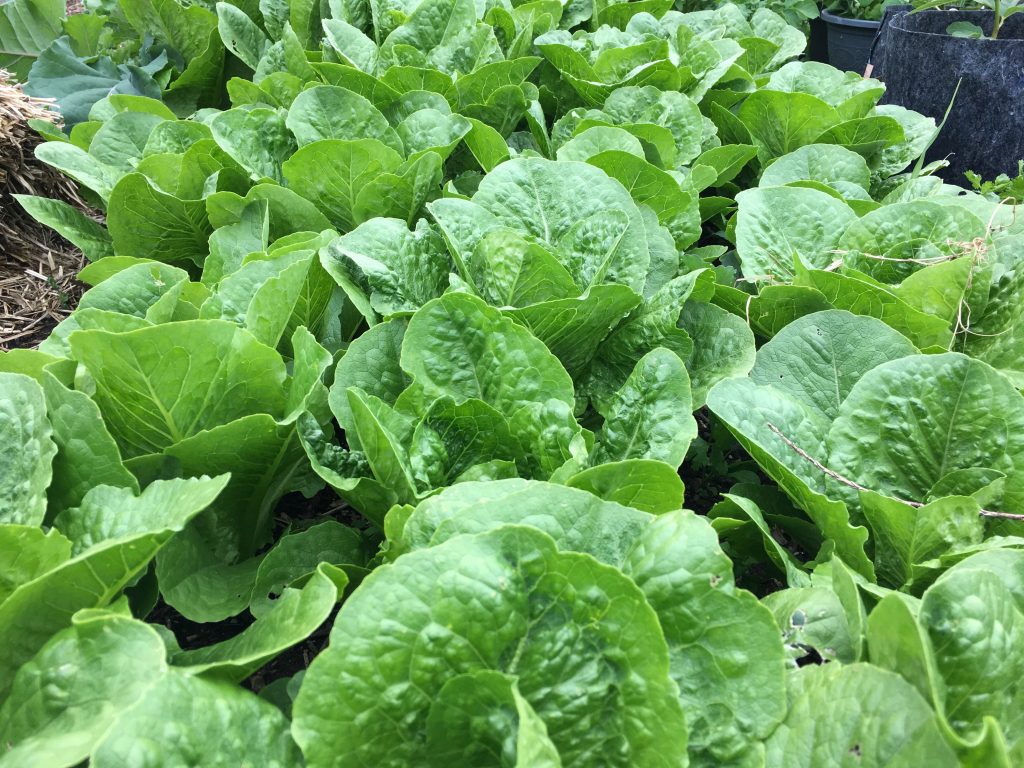
Donna’s soil is very poor but biochar has allowed her to grow a great garden including this spring crop of Romaine lettuce.
Donna: So the compost and the whole concept of gardening isn’t new to you, but what about biochar? What is this?
Rob: Yeah. So when I was a young person, I thought I would actually like to be a farmer and, [but] I went to school for chemical engineering. And I, I started a career in the oil and gas industry because it just seemed to be the thing to do. I was inspired to work on problems that had to do with energy. So I kind of abandoned my farm roots for a little while and worked as an oil and gas, petroleum engineer in Calgary after graduating from the University of Saskatchewan with a chemical engineering degree.
And one of the things that was of great interest was a way to sequester carbon dioxide geologically and even make use of it as a way to increase Shell Canada’s oil and gas production. So I spent a whole career dealing with CO2 in the atmosphere. Preventing it from going into the atmosphere and finding ways to sequester it geologically. So I don’t know if your listeners are familiar with carbon capture and sequestration, but that was the career I had and I kind of gained a bit of a reputation for that.
And so one day when I was attending our church, somebody who knew that I was involved in this whole environmental thing about getting CO2 out of the atmosphere gave me a piece of paper. And on the piece of paper it said Terra Pretta. And he said, have you ever heard of this, Rob? And he said, you should go and look into this. This might be of interest to you.
So I took it home and I googled it. And I found out that Terra Pretta is made with something called biochar by the Amazonian Indians 2000 years ago. And it’s just now, you know, in the last couple of decades being discovered by archeologists as an amazing technology that these Amazonian’s used.
.
And I’ve just not stopped Googling biochar since 2008. And I’ve just not stopped looking it up and learning more about it. And I’m fascinated by the whole topic of using charcoals in soil.
“So I spent a whole career dealing with CO2 in the atmosphere. Preventing it from going into the atmosphere and finding ways to sequester it geologically. So I don’t know if your listeners are familiar with carbon capture and sequestration, but that was the career I had and I kind of gained a bit of a reputation for that.”
Donna: Wow. So tell me a little bit more about how the Amazonians used it.
Rob: The Amazonians had cooking stoves that were designed to be inefficient. They didn’t burn their wood completely. So it was incomplete burning in their cooking stoves. And at the end of the cooking session, they would take the remaining charcoals out of the stove and put it on their compost heap near their abode. And they would put all the kitchen scraps there and they create compost that had a charcoal in it.
“The Amazonians had cooking stoves that were designed to be inefficient. They didn’t burn their wood completely.”
And then they would take that and spread it out onto the areas that they were trying to cultivate. And I don’t know if you realized, but the Amazonian soils under the rainforest trees, is very, very poor, mostly clay with a thin layer of, of nutrients that falls onto the floor, and that’s what the trees actually grow in. So there’s hardly any soil.
So to actually have agriculture, you need soils that are deeper than that. So they started building soils up from the use of compost that was amended with this charcoal from their stoves. And they created this amazing technology where they were able to thrive as a culture in this area of the Amazon forest which was originally not conducive for cultivation.
So they, they happened upon quite an amazing agricultural technology.
“So they started building soils up from the use of compost that was amended with this charcoal from their stoves. And they created this amazing technology where they were able to thrive as a culture in this area of the Amazon forest which was originally not conducive for cultivation.”
Donna : Wow. Now I feel like you’re talking about my soil here. I’m living in a temperate rain forest, and there’s just a skiff of soil over top of gravel and clay.
So now for those that haven’t heard the word biochar, what is it? Is it, is it just firewood that’s been burned down.
Rob: Yeah, so there’s an important word that that sometimes causes people to glaze over. But I think we, in this society, need to understand some of the technical words that go along with this. And that is this concept of what’s called pyrolysis. And pyrolysis is what you do when you’re cooking a roast in the stove. Or, pine nuts … just lightly Browning them.
That’s called pyrolysis because what you’re doing is you’re heating up organic matter but not allowing it to combust. And so you’re essentially roasting it. So [roasting] coffee beans is a really great example pyrolysis. But if you kept roasting coffee beans, they would become charcoal eventually if you don’t allow them to actually combust, to catch fire. So in other words you can achieve that by heating organic material in an oxygen deprived environment so that they don’t have the opportunity to actually burst into flame.
So when you heat organic material for long enough and at high enough temperatures in the absence of oxygen, that organic material loses all of its hydrogen. So all the hydrocarbons in that organic material convert from hydrocarbons to carbon because the hydrogen molecules are removed.
They, they go vamoose at high temperature. So you convert organic material, things that were living at one time and breathing and photosynthesizing from sunlight and the carbon dioxide in the atmosphere. You convert that organic material from plants and animals. And specifically we’re talking about woody biomass. You convert woody biomass into charcoal. That’s been done by indigenous ancient people for thousands and thousands of years.
And Canada, for example, is actually one of the countries in the world that makes excellent charcoal and has a reputation for producing excellent charcoal because we’ve been hollers of water and hewers of wood for hundreds of years in Canada, and so we make some of the world’s best barbecue briquets Quebec actually. So the technology for converting wood, and it’s usually the residual or the leftovers from sawmills and places like where you have a forest industry, get converted into charcoal traditionally in Canada.
“You convert woody biomass into charcoal. That’s been done by indigenous ancient people for thousands and thousands of years.”
Donna: Are you telling me that biochar is just charcoal?
Rob: It’s charcoal, but biochar specifically is the same kind of charcoal that you would make for, for a barbecue but it’s made intentionally to be used to, to help soils be more productive. So no two charcoals are the same. There’s all kinds of ways of making charcoal and, um, all kinds of feedstocks, for example, different kinds of wood and conditions.
When you’re making biochar, what you’re trying to do is create a charcoal that has the ability to adsorb nutrients and has significant amount of holes in it, so lots of porosity. In order to do that, you have to raise the temperature a little bit, and sometimes you have to leave it in those high temperature conditions for a little longer because you don’t want to have any of the hydrogen left in the material. You’d like to have as close to pure carbon as possible.
That said, the objective when you’re making charcoal for barbecue briquets is to leave as much of the energy content [hydrogen] in there.So it’s a different objective when you’re making biochar.
“When you’re making biochar, what you’re trying to do is create a charcoal that has the ability to adsorb nutrients and has significant amount of holes in it, so lots of porosity. In order to do that, you have to raise the temperature a little bit, and sometimes you have to leave it in those high temperature conditions for a little longer because you don’t want to have any of the hydrogen left in the material. You’d like to have as close to pure carbon as possible.”
Donna: Are you saying the hydrogen is removed when making biochar?
Rob: yeah. Hydrogen is a very flammable, very high energy content molecule, and you try to get rid of as much of the hydrogen as you can in the charcoal making process. To make biochar.
But with a charcoal that you might buy at the store, that would still possibly have some hydrogen and it would have, tars and oils and some of the other volatiles. These are things that don’t get removed when you’re making charcoal for barbecue briquets.
And the temperature when you’re making biochar is a higher temperature and sometimes a higher period of time. So it’s a different objective. The whole science of pyrolysis is extremely well studied and the scientists now have been working on making biochar for specifically for soils now for the past couple of decades. So it’s not really an old science, but it’s been focused on quite intensely since the early two thousands.
The process of conversion of organic material into [making] the best possible charcoal for the benefit of a soil that you want to help become more productive.
“But with a charcoal that you might buy at the store, that would still possibly have some hydrogen and it would have, tars and oils and some of the other volatiles. These are things that don’t get removed when you’re making charcoal for barbecue briquets.”
Donna: So you go home one day with a piece of paper that says Terra Pretta. You start googling it. What happens to the rest of your career? Do you just quit your job and start working?
Rob: Well, it really inspired me and it was still very relatively early days in the biochar space, because it really hasn’t taken off until about 2012 or so. So here I was in 2008 and I was inspired. I just couldn’t see any problem with this. I could only see possible benefits for the planet because it was taking carbon dioxide from the atmosphere through photosynthesis. And fixing it as a permanent material to amend into soils, which forms a kind of a sink for carbon, which is the kind of technology we need on this planet right now, especially if there’s a benefit for having that carbon in the soil.
“I could only see possible benefits for the planet because it was taking carbon dioxide from the atmosphere through photosynthesis, fixing it as a permanent material to amend into soils, which forms a kind of a sink for carbon, which is the kind of technology we need on this planet right now”
So the first concept was to set up a company. And then we called it Air Terra. That would work as almost a nonprofit, but as a way to promote the use of biochar internationally. And as such, we put an advertising [campaign] out there, and we had a farmer, a small shareholder farmer from Kenya, call us up through the internet. He was inspired.
He wanted to learn how to make use of this technology in his farming practice. Now this gentleman is an extraordinary person. His name was Seleme Myaki Chabanne (spelling not confirmed) and he was the indigenous leader of quite a large community north of Nairobi.
And we spent some time with him and learned that he had the ability to pull people together and do things that were extraordinary. And so we found a way to do something similar to what the Amazonians had done. To use wood or wood from cooking.
And [now they are] cooking with a paralytic stove, the stove that produces biochar as the end result of a cooking session. And therefore you would use the waste energy that gets produced during the process for the cooking. It’s the methane and the hydrogen that comes off during the making of the charcoal is used for cooking food.
So three times a day Saleem’s mother cooks on a stove that he built and he’s built hundreds of them now for his community. And the residual, um, charcoal that was produced in the cooking process is collected and blended with animal manures to grow maize.
By the time we were making stoves with Saleem and his organization it was about 2012. And he’s continued to do that. We’re helping a world cause.
So we did that for several years, and it had become quite costly. [With the] trips to Kenya and we introduced the concept in Malawi as well. We realized that the marketplace and the awareness of this technology was growing in Canada and we felt in order to be able to afford to continue doing this [International work] we would have to have a profitable business here in Canada.
And so we pivoted our direction towards a Canadian product [Soil Matrix Biochar] for gardeners and farmers in Canada. In 2013 we began a process of registering our product with the Canadian Food Inspection Agency. Because you know, Canada, North America, we’re very highly regulated and we require a registration to use any kind of product in soils and Canada.
“And so we pivoted our direction towards a Canadian product [Soil Matrix Biochar] for gardeners and farmers in Canada. In 2013 we began a process of registering our product with the Canadian Food Inspection Agency. “
Donna: When I first heard of biochar, I heard it from a soil scientist that was teaching in Germany, but she was originally from the Philippines, so it was kind of an international story already, and she said, just buy lump Charcoal at the store and just break it up into pieces.
And so I did that [with great difficulty.] And I’m not seeing any results here. And now I know why. I’m hearing from you that lump charcoal is not quite the same as biochar. So you’ve been able to distinctly specify a product that’s different.
Rob: That’s right. And we’ve continued to specify what makes the best quality material. And so, for example, big chunks of charcoal don’t really help soil too much because you don’t get very much contact between those big chunks and all the small particles of soil.
Donna : So you need to have a granulated charcoal. It’s like swallowing a whole roast versus cutting it up into fine pieces.
Rob: Yeah, that’s right. So the consistency of grains of rice are about right. For blending the soils with compost.
Donna: So you weren’t really making it yourself. You just set up the specifications.
Rob: Yeah, that’s right. So we’ve gone to CFIA, like I said. We’re initially working with companies that make charcoal as part of their business, but we’re working with them too. To specify just exactly what kind of charcoal we want to want them to make. And that’s taken some time, but it’s come along now. So these companies have the capability to produce a charcoal that has been heated at the right temperature and for the proper length of time in order to bring it to a place where it has quality for soil.
“So these companies have the capability to produce a charcoal that has been heated at the right temperature and for the proper length of time in order to bring it to a place where it has quality for soil.”
Donna: Now full disclosure here – I am selling your products on my web page. I am not making any money off this interview but I am selling your products. As soon as I had my bad luck purchase of lump charcoal, I discovered your products through a government agency and I started using it and it’s just amazingly different. It’s so lightweight and it’s so fine.[It has also really helped my soil hold nutrients]
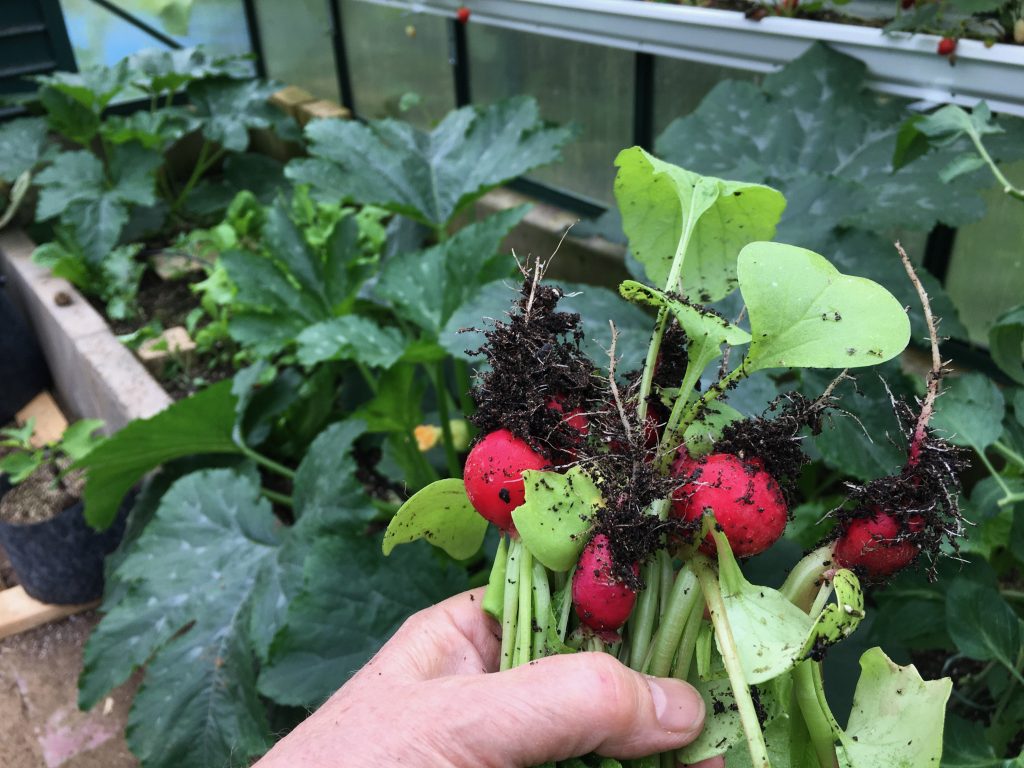
In my greenhouse I had the most trouble creating nice soils from sand. This pest-free spring crop of radishes show how nice my soil is now
Rob: So what you have to do is look at what are the benefits, what kind of benefits does charcoal have for soil? And there are many. It’s like a three-legged stool. First is the ability to absorb moisture. So soak up moisture and hold onto it. So we call that moisture retention capacity. [Second] is the ability to adsorb nutrients. So that’s the key to hold onto nitrogen and phosphorus and potassium and those kinds of nutrients.
“Now you’ve got moisture and nutrients that are plant available attached to the biochar. And then the third component is that the bio char has to be welcoming for beneficial microbes that help plants.”
In order to do that, the charcoal has to have positively and negatively charged surfaces on it because these nutrients become plant available when they are dissolved in water. So the charcoal is holding onto a lot of water and these nutrients, what are called ions, are adsorbed onto the surfaces of the charcoal. Now you’ve got moisture and nutrients that are plant available attached to the biochar. And then the third component is that the bio char has to be welcoming for beneficial microbes that help plants.
That’s the real sort of clincher is that bio char, made properly, attracts and houses and protects and provides a dwelling place for the microbes. These work synergistically with plants. So you have all three of those things happening at the same time, and now you’ve got a material that goes into the soil and works positively with plants.
“That’s the real sort of clincher is that biochar, made properly, attracts and houses and protects and provides a dwelling place for the microbes.”
Donna: And what happens to biochar once it gets into the soil? Because when I first started getting it from you, we were just mixing it with an organic source, like [flour] and compost, and then just laying a shallow layer on top of the soil. Is that still how you’re applying biochar?
Rob: That’s fine. That is one way. I can tell you a couple other even better ways to make use of it, but that is one way. And that will work, especially if you’re out where there’s earthworms. The earthworms go up and down like a sewing machine going through the soil. And they come up, they pull things out off from the surface. They bring a little bit of organic material down into their burrows, and they go back down and they keep moving up and down like that.
And one of the things is that an earthworm is biochar’s friend, because an earthworm is like a chicken. It has a gizzard. So it actually likes to have a little bit of grit. And it’s gizzard and biochar works as a really nice grit for earthworms. So the earthworms will pull that biochar down from the surface into the profile of the soil quite nicely, so you don’t have to do it yourself.
Now, a better way to use our char is to actually co-compost it, use it as an ingredient in the composting process itself. And this has been discovered in about the last five years, actually at the university of Saskatchewan.
They use some light sources and spectral photographic techniques to study particles of biochar after the composting process. They become coated with really nice, beneficial plant available nutrients during the composting process.
So you get an organic coating around all of these biochar particles, which actually makes those particles that much more beneficial for plants. So my recommendation for people who are using biochar is to not just blend it right away into your soil or with compost, but to actually co- compost.
“Now, a better way to use our char is to actually co-compost it, use it as an ingredient in the composting process itself.”
Donna: [I’ve seen] other suppliers who mix biochar in with compost and so they’re selling you something that’s already mixed into compost.
Rob: Yeah. But you don’t know if it’s been co-composted or just simply blended.
Donna: Right, right. That’s good [thing] to ask, isn’t it? If someone’s selling that, you should say to them, have you co-composted this or have you simply blended it in after the fact… yeah, and I haven’t mentioned this to these other suppliers, but I worry that perhaps they’ve mixed these things at the last minute and then sealed them up and they’re in an air tight condition.
Maybe the microbes that are in that mix won’t be as available [once blended into soils.]
Rob: Correct. Correct. Because then go anaerobic on you and then it’s less beneficial.
Donna: Right? And so your product, the Airterra Soil Matrix biochar is ready to be used. It’s not actually useful yet. Is that the right way to say it?
Rob: Correct. It’s an input. So we sell pristine biochar. We don’t yet have a process for composting it and selling it as a compost product. It’d be tough, but it is something that could be done. Um, locally.
For example, you know, there are composting businesses locally that sell compost to gardeners and farmers and such. And that’s a business that could evolve over time, a biochar fortified compost making business. I would sell that directly once it’s finished to farmers or gardeners.
Donna: Oh, I love this, Rob. I wish I was 20 years younger and I could start that business!
Rob: Yeah. So, one way for, for a household to use [our] biochars is in your kitchen scrap pail if you make compost yourself in your backyard because it works as a deodorizer as well, because it has its surface area that absorbs moisture and nutrients, and so it absorbs all those things that actually make bad smells too.
Donna: Under your sink? How much [biochar] would you add?
Rob: I just line the bottom of it. Just put an inch of biochar on the bottom of the pail. Yeah, just on the bottom. It will be like a magnet. It just draws the odours down into it.
And it prevents the liquids from building up on the bottom of the pail and then creating anaerobic conditions at the bottom of your bucket or pail of kitchen scraps.
Donna: Right. Can you still use paper? I was lining my pail with newspaper.
Rob: Yeah. You could, but what I’m going to suggest is when when your pail is full, you just go out [and dump it] and I do this all winter long. I take kitchen scraps in a pail lined with biochar on the bottom out to my compost place in my backyard and I just dump it into the pile.
And some of that Biochar falls into my composting process. So it’s like in a lasagna, [layered in the] composting process all winter long. And by the spring I’ve got finished compost that very nice because it has a nice, blend of biochar already in it, and it has been co-composting all winter, and it doesn’t take very long.
Donna: You’re saying that your bucket, you don’t even dump it all out specifically. You just dump out whatever falls out and then you still leave some bio char in the bottom.
Rob: Yeah. You can do it that way. Or you can really smack it all out, and then do a cleanup job and start again.
Donna: So I love that idea. But let’s back up just a little bit. Honestly. People have so many inputs to put into the gardens. They’re so confused. They get to the garden center. There is a huge wall of choices they’ve got.: lime, fertilizers, peatmoss, coir. They’ve got all these blended products. People are confused. So when they see biochar sitting there on the shelf, I’m sure some of them are thinking, “Oh, what is it? Is it just one more thing?” What does it actually do once people get it into their gardens?
“People have so many inputs to put into the gardens. They’re so confused. They get to the garden centre and there is a huge wall of choices:lime, fertilizers, peatmoss, coir.”
Rob: Well, it could ultimately very much simplify the gardening process because the more of a biodynamic soil you can encourage for your garden, the less your garden needs all those other things. So I mean with the charcoal and the soil, you’re going to be encouraging beneficial microbes that are going to be providing nutrients that will eliminate the need to add nutrients in some cases, especially if you’re using a good compost.
So compost [and biochar] can become the main ingredient for inputs for your garden. And what the bio does is it welcomes all those beneficial microbes that use the compost as food and convert the compost into plant available nutrients.
And biochar creates a welcoming environment for those beneficial microbes to live in while the plants are growing in your garden. And I don’t know how many of your listeners or readers are striving for biodynamic growing conditions, but, having soils that are alive, with a good, healthy food life web in it is a way to simplify your gardening approach because you’re letting nature do the things it needs to do to produce healthy plants.
“having soils that are alive, with a good, healthy food life web in it is a way to simplify your gardening approach because you’re letting nature do the things it needs to do to produce healthy plants.”
Donna: Okay, so some of the buzzwords that are out there are, for instance, organic. Is this organic, like is this something that you could do if you were working with certified organics.
Rob: Absolutely. Bio char is on the permitted substances list for organic farming, and you can go to the Canadian Government’s documentation on organic farming or organic soil. And you’ll find bio char is on the permitted substances list
Donna: Okay. Regenerative farming. So that word regenerative farming is a relatively new term. Some people might not know what it means, but is that what you mean by Biodynamic?
Rob: Correct. And, there’s a couple things about regeneration of soils. Soils have become depleted over time. Because of the loss of organic material, loss of the carbon. Okay. Soil, organic carbon, and the way we’ve caused this loss is we’ve introduced a lot of air into the soil by cultivating them so rigorously, so aggressively.
So when you cultivate and you turn soils over, you introduce air into the soil. And that causes, um, reactions with the organic material in the soil. So it decomposes and then becomes carbon dioxide and just released to the atmosphere. And so that’s why you lose carbon from the soil. And, and so, regenerative agriculture says, Oh, no.
Let’s not disturb the soil as much. Let’s try to leave the residuals from previous crops in the soil or on top of the soil and let that soil carbon regenerate itself. So soil carbon or organic carbon in the soil is what promotes healthy, beneficial life in the soil as well.
“I’m talking about the carbon in the organic material in the soil is actually food for beneficial microbes. So you want to leave that in there. You want to be able to feed your soil. Don’t feed your plants, feed the soil, because it’s the living organisms in the soil that know how to feed your plants.
Let let them do it.”
Donna: Okay, so how is this different from the biodynamic soils that you’re talking about.
Rob: it’s the same. It’s exactly what makes them a biodynamic soil. Biodynamic is that you have beneficial microbes, bacteria, and fungi that are actually using the organic material in the soils as food and converting it into plant available nutrients.
Donna: Now tell us about your soil in your Calgary garden. You’re living in the Northwest. Probably had some pretty poor soils to start with, I’m guessing
Rob: So what I did was I cardboard-bombed my backyard and that was about 10 years ago. I put this cardboard down in three foot wide beds, [and] areas in between the beds I dug about two feet down to create , what’s called a swale.
Okay. Between these, these three foot wide garden beds, and I filled that two foot trench with woodchips. Um, and I [shovelled the soil] on top of the cardboard.
Donna : Okay, so you moved the soil and subsoil on top of the cardboard? Then filled in the hole with wood mulch.
Rob: Correct. Just to hold the cardboard down and smother the lawn underneath it. And then I put wood chips into my swales and those have become my pathways. All the water from my house goes into those connecting, interconnecting swales. So whenever I get torrential rains, my two foot deep swales get full of water. And so that becomes a source of moisture for, for the garden.
But I’ve got sub soil on top of the cardboard [then] I put almost straight compost and biochar blended together, in a 10 to 20% by volume. And I seeded directly into that.
“Just to hold the cardboard down and smother the lawn underneath it. And then I put wood chips into my swales and those have become my pathways.”
Donna: You seeded directly into it? From day one?
Rob: That’s right. And over the years, it’s become a beautiful thing. I just love my soil. It’s, it’s like a pudding. it’s a beautiful, lush soil for gardening. And I’m like, I can’t wait to get out there and get the warmer temperature so that we can actually get started every year.
And it’s become thicker because I continue to put compost onto it. And so my beds between my pathways, uh, have risen a little bit. And that’s fine too.
“I just love my soil. It’s, it’s like a pudding. it’s a beautiful, lush soil for gardening.”
Donna: So as the wood chips breakdown in your pathways, do you add more in there as well?
Rob: I haven’t done that yet, but I’m getting close to needing to do that because eventually that does happen. And so I’ll, I’ll start again. I’ll dig out the pathways and I might use some of that decomposed wood as further inputs for the, for the garden beds. I’m leery about putting too much wood into the soil and the garden bed because that can create a nitrogen draw that , might be harmful. So I have to be really well decomposed wood chips before you put it into the garden soil.
Donna: Well, that’s interesting. So Calgary’s not the only city in the world with heavy clay soils. We hear this again and again and again from gardeners. They just garden, but because the soils are so heavy with clay they build wooden edging, and then it’s just one thing after another [trying to improve soil.]
******
Then Donna Asked Rob about making his own biochar and how to decide whether to add it to the garden. We both agreed to add ash from the fireplace into the compost, not to the soil directly. But even in the compost, the ash has to be diluted or added slowly.
For the complete interview look for Helping Gardener’s Grow in Itunes or Episode 13 of this this podcast on this web page.
Donna Balzer is the Brand Ambassador for BCGreenhouse Builders and she has two greenhouses in her big backyard.

What Would Donna Do?
Get my growing and gardening tips and pointers throughout the season.





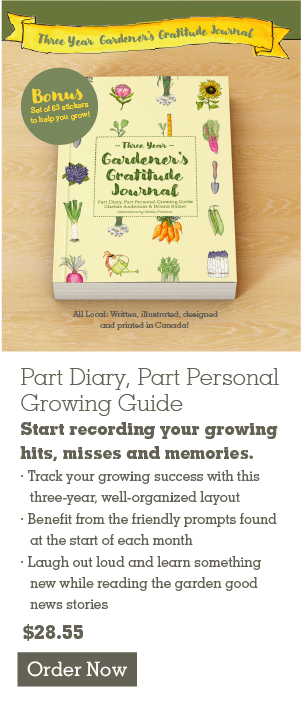





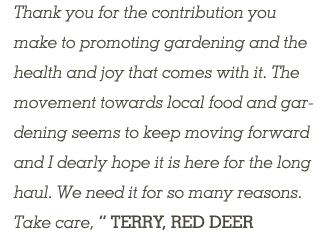
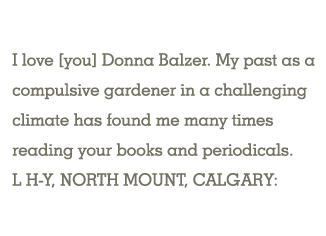
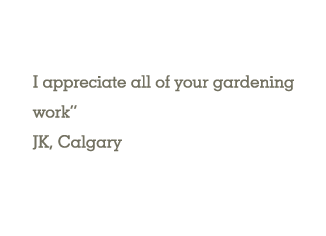

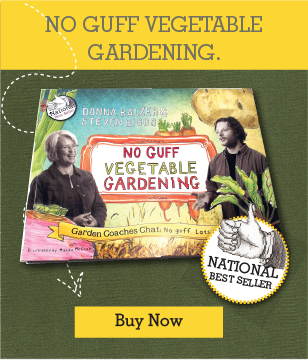
0 Comments